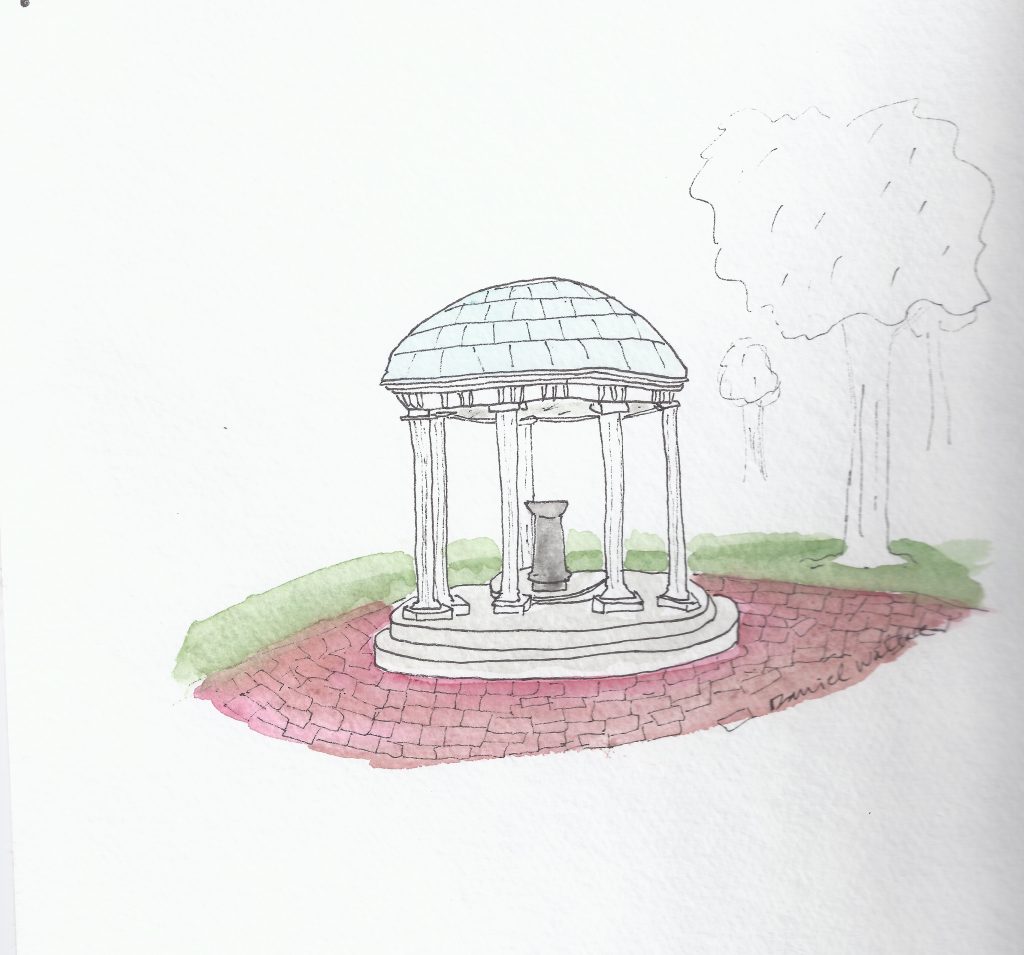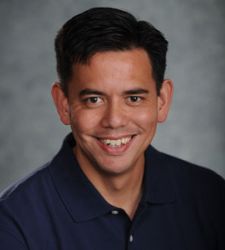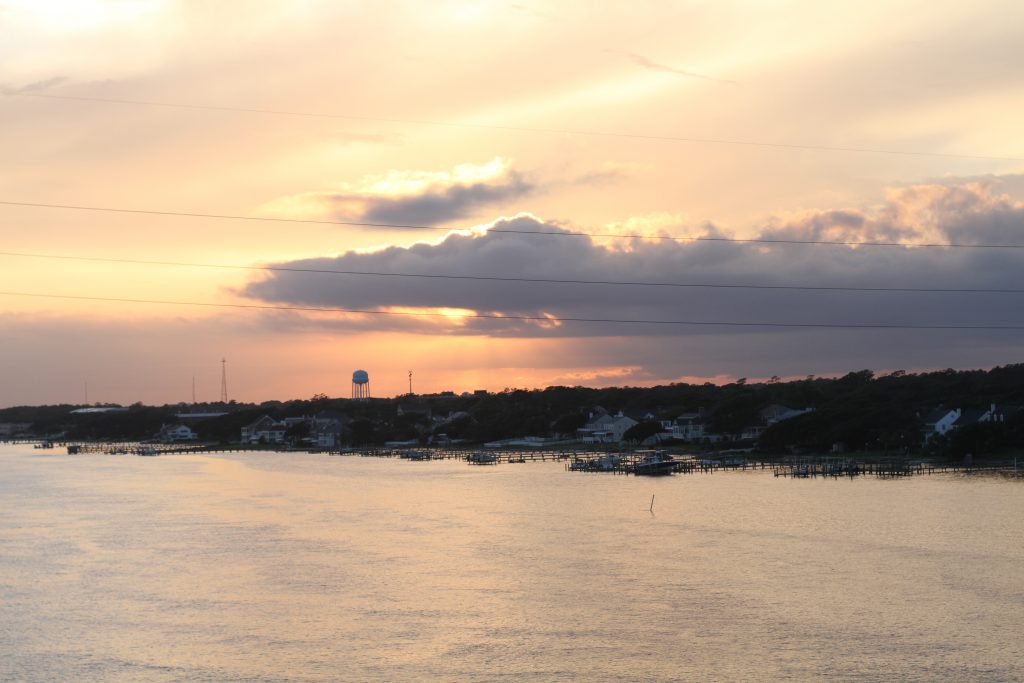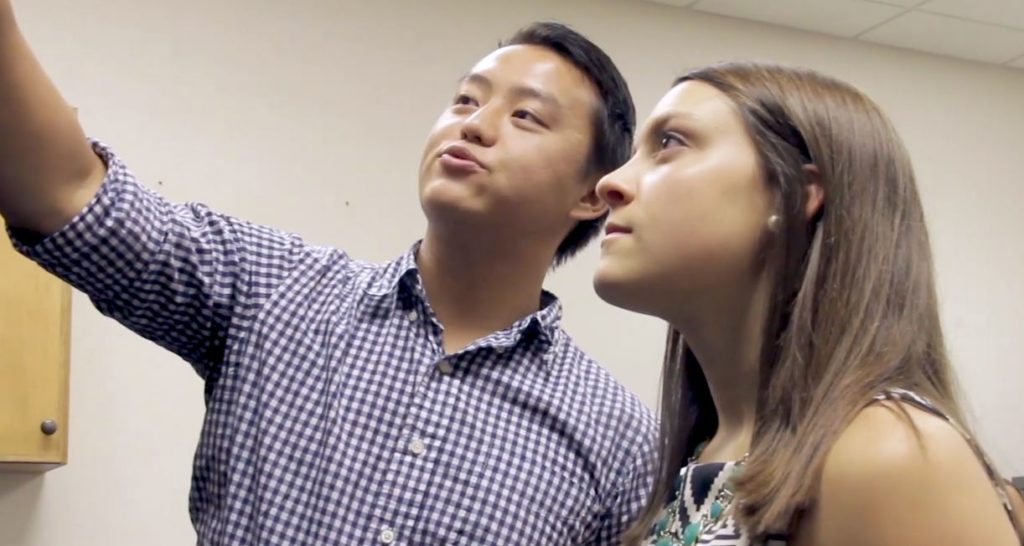
Whether it’s the backdrop for a cap and gown photo after Commencement or the must-see stop for visitors, the Old Well is one of the most photographed spots on campus.
And perhaps nobody has taken more photos of the Carolina icon than Steve Davis.
Davis and his colleagues at the University’s Research Laboratories of Archaeology have spent days on McCorkle Place photographing every inch of the Old Well to create a virtual 3-D model of the landmark — a process that led to a new, digital museum.
“This was one of the first projects that we did,” said Davis, the associate director of the Research Laboratories of Archaeology in the College of Arts and Sciences. “We wanted something interesting and iconic that we could shoot. The Old Well was the logical choice.”
The model, which was created using more than 400 photos of the Old Well, is now on display in Research Laboratories of Archaeology’s virtual museum, where viewers can see the structure from every angle.
It took the group nearly two years to get the interactive model right.
Davis and his team began the project in March 2015 to start learning the 3-D modeling technology before heading out for their annual summer excavations. After several days taking photos of the Old Well — including time in a cherry picker to get a bird’s-eye view — the team had hundreds of photos.
“We needed every point on the Old Well to be visible in at least two photos —preferably in many more,” Davis said. “When you photograph, you want to have a lot of overlaps because the software is going to look at a lot of photographs and look at common points in those photographs that it can tie together.”
When they began uploading the photos into the software, however, they realized how complex the structure would be to model. Their computers could only handle a tenth of the photos needed for a complete rendering.
“The base looked great, the top looked great, but the columns just looked terrible,” Davis said. “It was a learning experience. It was all new to us.”
It wasn’t until more than a year later that the team finished the model using improved software, and with the help of Carolina alumnus Ken Varner, who owns a company that provides extensive computer modeling for commercial and engineering use.
“The Old Well initially didn’t work out, but even though we didn’t get a successful model, we learned a lot of things that made us more comfortable applying the technology,” Davis said.
Since the first attempt at the Old Well model in 2015, Carolina’s archaeologists have integrated the state-of-the-art technology into their standard work, creating 3-D renderings of artifacts found at excavation sites.
“It gives us highly accurate, detailed, photo-realistic models that anybody can look at,” Davis said. “We can take measurements on those models. We can analyze the object through the model and we can see details that might not be clearly visible in the original object. It’s a very useful analytic tool.”
But more importantly, the technology can better document the excavation site itself.
“The process of archaeological excavation is destructive, so we’re always looking for better ways to document what we see in the field because nobody’s ever going to see it again,” Davis said. “That’s the evidence that interpretations are based on.”
All of the models are available online at the virtual museum, where professional and amateur archaeologists can better view hundreds of years of history. It’s a project that all began in a cherry picker above the Old Well.
“You get a new technology and you just try things with it,” Davis said. “You see what works and what doesn’t. Since then, we’ve had two summers in the field, modeling excavated surfaces and we’ve constructed over 370 models of artifacts for our virtual museum.”
To learn more about the 3-D imaging, see Centuries old meet high tech.
https://skfb.ly/ZrEs




